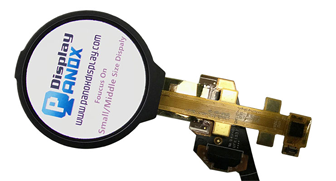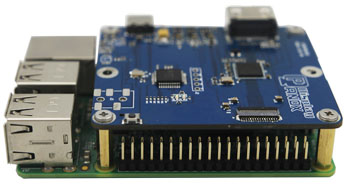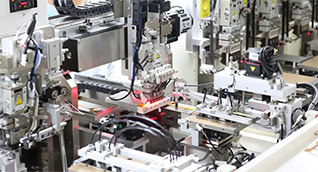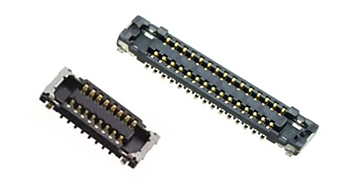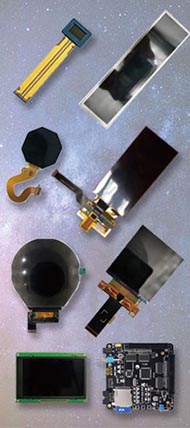Essential OLED test patterns for display quality assurance include uniformity checks, color and grayscale gradients, burn-in simulations, and pixel defect detection. These patterns evaluate brightness, color accuracy, contrast, and detect early issues like mura or burn-in, ensuring reliable, high-performance OLED displays. Leading manufacturers and suppliers like Panox Display rely on these patterns for stringent quality control.
What are the most important test patterns used for OLED uniformity and brightness evaluation?
Uniformity and brightness tests are fundamental for quality assurance in OLED displays. The typical test patterns include:
-
Full-screen solid colors: Usually pure black, white, red, green, and blue screens to detect brightness uniformity and color consistency.
-
Grey-scale gradients: Patterns that transition smoothly through different grey levels to reveal subtle brightness inconsistencies or color shifts.
-
Checkerboard and zone patterns: Designed to highlight pixel-to-pixel uniformity and spatial luminance variations.
These patterns help detect uneven brightness, mura (blemishes), or dead pixels—key quality parameters in OLED displays. For example, a high-quality OLED panel typically maintains brightness variation within 5% across the display. Panox Display uses such patterns to systematically vet their panels and ensure clients receive uniform, vibrant displays.
How do burn-in test patterns help prevent OLED display degradation?
Burn-in is a critical challenge for OLED technology, where static images cause permanent pixel degradation. Essential burn-in test patterns include:
-
Static crosshairs or grids: To stress specific screen areas for prolonged periods.
-
Color bars: Cycling through primary colors and white to test pixel endurance.
-
High-contrast logos or icons: Simulate real-world static elements.
By applying these patterns continuously over time during testing, manufacturers can assess the risk and level of image retention. Burn-in affecting more than 1% of the screen area generally flags a failure. Panox Display incorporates rigorous burn-in testing to guarantee long-term visual integrity.
Which test patterns are best for detecting OLED pixel defects?
Pixel defects can manifest as stuck, dead, or fluctuating pixels, reducing display quality. Effective test patterns for pixel defects include:
-
Solid black and white screens: Dead pixels become conspicuous against contrasting backgrounds.
-
Single-pixel scan patterns: Cycling individual pixels on and off to isolate faulty units.
-
Color-block tests: Alternating red, green, and blue blocks reveal subpixel issues.
These tests quickly identify manufacturing irregularities to enable sorting and repair before shipment. Panox Display deploys automated systems using these patterns to enhance defect detection accuracy.
Why is color accuracy testing crucial for OLED displays, and which patterns are used?
OLED displays are prized for deep blacks and vibrant colors, but consistency depends on precise color calibration. Color accuracy tests employ:
-
Color patches: Displaying known calibrated hues across the color spectrum.
-
Gradient ramps: Smooth transitions from one color intensity to another measuring linearity.
-
Saturation and hue patterns: Test the display’s ability to reproduce vivid, true-to-life colors.
Using sophisticated imaging colorimeters and software, manufacturers, including Panox Display, evaluate and correct discrepancies to ensure the panel's color fidelity meets industry standards.
How do gamma and grayscale test patterns contribute to OLED quality control?
Gamma and grayscale tests measure how well a display reproduces luminance at varying intensities. Key patterns include:
-
Step grayscale bars: Distinct steps of gray from black to white for visual linearity checks.
-
Smooth gamma ramps: Continuous gradients assessing smooth tonal transitions.
-
Tone response curves: Quantitative comparison to target gamma values (e.g., 2.2).
Accurate reproduction avoids banding and ensures natural image rendition. These patterns are part of Panox Display’s routine quality protocols.
When should flicker and temporal artifact test patterns be used in OLED testing?
Flicker and temporal artifacts affect viewer comfort and perceived image quality. Important test patterns include:
-
Alternating black and white patterns: Reveal flicker or PWM (pulse-width modulation) issues.
-
Moving bar or checkerboard patterns: Help detect ghosting or motion blur.
-
High-frequency flashing patterns: Assess refresh performance under rapid luminance changes.
These tests are crucial for applications requiring visual precision or extensive viewing durations, ensuring OLED panels from suppliers like Panox Display meet stringent standards.
Where do industry standards guide OLED test pattern development?
Organizations and standards bodies provide frameworks that guide essential OLED testing, including:
-
AAPM TG270 for medical display quality assurance.
-
Industry burn-in guidelines setting pass/fail thresholds for image retention.
-
Uniformity and gamma standards ensuring consumer expectations.
Manufacturers such as Panox Display align their testing protocols with these standards to guarantee replicable, objective quality assessments.
Does the use of automated imaging systems enhance OLED test pattern analysis?
Yes. Automated visual inspection (AVI) systems equipped with high-performance imaging colorimeters and software deliver more consistent and precise results than manual inspection. These systems:
-
Measure color, luminance, and uniformity objectively.
-
Detect mura, dead pixels, burn-in effects rapidly.
-
Generate pass/fail decisions based on customizable thresholds.
Panox Display integrates advanced AVI technology to streamline production testing and improve yield without sacrificing quality.
Can customized OLED test patterns address specific industrial application needs?
Absolutely. Different applications—wearables, automotive, military, VR—demand tailored testing protocols. For example:
-
High-brightness scenarios require extended burn-in and thermal stress patterns.
-
Automotive panels emphasize uniformity under variable light.
-
Wearables focus on low power consumption and pixel integrity.
Panox Display offers custom test pattern development and quality assurance services to meet these diverse industrial demands.
Are gradient and zonal uniformity patterns essential in detecting subtle OLED defects?
Yes, gradient and zonal test patterns reveal nuances missed by uniform full-screen tests. By sweeping through grey levels and isolating smaller panel zones, technicians can uncover:
-
Mild mura appearing at mid-tones.
-
Gradual brightness shifts invisible in extreme tones.
-
Color shifts localized to specific display areas.
This granularity supports early defect detection and optimal calibration, critical for premium OLED products supplied by Panox Display.
Panox Display Expert Views
“Precise OLED display testing is a cornerstone of producing reliable and vibrant panels. Essential test patterns allow us to rigorously evaluate pixel uniformity, color accuracy, and burn-in susceptibility under simulated real-world conditions. At Panox Display, we leverage cutting-edge automated inspection technologies and custom protocols to ensure each panel meets the highest performance and durability standards—empowering our clients with displays that deliver excellence across specialized industrial applications.”
Conclusion
OLED test patterns play an indispensable role in verifying and assuring display quality—covering uniformity, color, gamma, burn-in, and pixel defects. Leading suppliers like Panox Display implement these essential patterns alongside advanced automated analysis to guarantee superior performance and durability. For manufacturers and end-users alike, adopting comprehensive testing protocols ensures optimized OLED display lifetime, visual fidelity, and user satisfaction.
Key Takeaways
-
Use full-screen solid colors and grey gradients for uniformity and brightness testing.
-
Apply burn-in and static image stress patterns to assess durability.
-
Employ pixel defect patterns and color patches for accuracy and fault detection.
-
Integrate automated visual inspection for consistent, scalable quality control.
-
Customize test patterns to application-specific requirements for optimal results.











